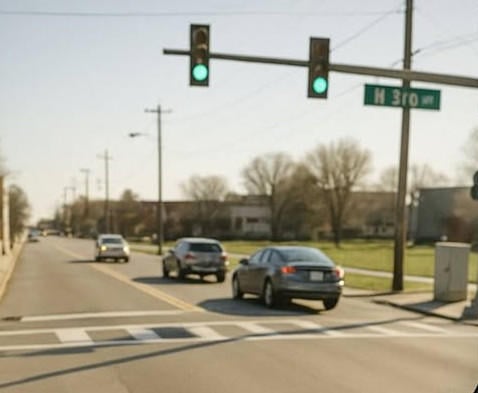
Was a Dayton, Ohio teenager named Kameron Price fined and placed under house arrest in June 2025 after hacking the city's traffic control system and fixing several intersections? No, that's not true: The story was fabricated and appeared to be satirical in its origins. Photos posted with the story were fake and showed signs of having been AI-generated.
The story and photos originated in a June 25, 2025, post on Facebook, which was shared more than 22,000 times in just two days. The text caption in the post read:
A 17-year-old high school student in Dayton, Ohio, has been fined and placed under house arrest after authorities discovered he had hacked into the city's outdated traffic control system and quietly fixed the timing of several major intersections.
Kameron Price, a self-taught coder and robotics club member, reportedly used a Raspberry Pi and a decommissioned school-issued Chromebook to gain access to the municipal traffic grid. Over the course of several weeks, he rewrote the timing logic for at least five major lights along West 3rd Street--drastically reducing backups during rush hour and syncing green lights to reduce stop-and-go congestion.
"He didn't disable anything or cause danger," said a traffic engineer speaking on condition of anonymity. "Honestly, his code was more efficient than what we were using."
But city officials said the changes violated multiple laws, including unauthorized access to a government system and interference with public infrastructure. Kameron was cited under a local ordinance pertaining to unauthorized modification of municipal services--a misdemeanor typically reserved for utility tampering.
According to Kameron's parents, he initially took it on as a side project after watching his bus get stuck at the same broken intersection every morning for weeks. "It would take longer to go three blocks than it did to get across town," his mom explained. "He got tired of watching everyone waste gas and time just sitting there."
Public reaction has been overwhelmingly in Kameron's favor. A video of the intersection running smoother than it has in years has gone viral, and a local radio host dubbed him the Subway Surfer of traffic flow. Online petitions calling for the fine to be dropped have already surpassed 50,000 signatures.
"Honestly, give the kid a job," one commenter wrote. "He's doing more for this city than whoever programmed those lights in 1998."
This is what it looked like at the time of writing:
(Source: Facebook screenshot)
The story was fabricated, and the photos posted alonside it were fake, and showed signs of having been AI-generated.
The account that first posted the "Kameron Price" story, "Cops Moment", regularly posts similar stories which neatly highlight a perceived injustice, for example a June 26 story about a retired carpenter in Oregon, arrested for rebuilding bus stop benches that had been removed to deter homeless people; or another June 26 story about a pastor in Ohio who was supposedly prosecuted for violating fire regulations when he allowed homeless people to sleep in his church.
The stories were accompanied by clearly AI-generated images, such as the one that accompanied a June 25 story about a postal worker in Iowa who was supposedly arrested for throwing junk mail in recycling containers rather than delivering them to homes. The image supposedly showing the man in question featured tell-tale glitches in the letters on his USPS badge, meaning it spelled out "UNTERDDUTIES POLCE CAENE" rather than "UNITED STATES POSTAL SERVICE":
(Source: Facebook screenshot)
The images that accompanied the "Kameron Price" story bore similar hallmarks of having been AI-generated. For example, an image that appears to show traffic in Dayton features a car driving the wrong way, headlong into other cars -- the kind of logic error that is typical of AI-generated images:
(Source: Facebook screenshot)


















